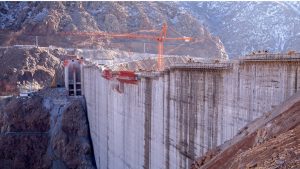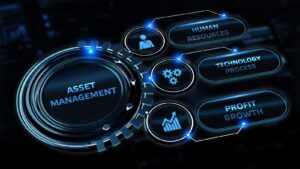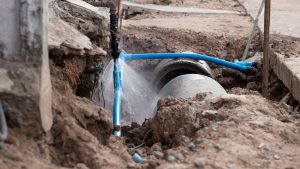Since the International Panel on Climate Change declared a code red for humanity in 2018, ‘Net Zero Emissions’ has been a famous phrase used by governments globally. ‘Net Zero Emissions’ explicitly means the aim to balance greenhouse gas emissions that are produced and emitted into the atmosphere. The more gas emission produced, the harder it is to achieve a net zero emission goal as there will be more carbon dioxide in the atmosphere. The more carbon dioxide in the air, the warmer the planet gets. Hence, to stop Earth from heating, companies should either not produce emissions at all or offset the emissions they produce. This is typically done by planting new forests or using specific technologies designed to capture greenhouse gas emissions, such as ‘Carbon Capture’. The United Nations Framework Convention on Climate Change (UNFCCC) has noted, however, that a plan to achieve net-zero emission cannot rely on offsetting emissions. Thus, the eco-friendly solution is not to produce emissions at all.
Implementing digital solutions is one easy way to avoid making emissions. It is also a feasible option available for any organisation regardless of size. Industrial 4.0 technologies, including the integration of the Industrial Internet of Things (IIoT), GIS technology, and digital twin and others, have been an asset to increase productivity in corporations whilst reducing emissions.
Net Zero Emissions in Australia
An Overview of How Tigernix Incorporates Industry 4.0 Technology to Achieving Net Zero Emissions
Combining Predictive and Prescriptive Analytics for Asset Maintenance and Longevity
Identifying and Removing Waste and Energy Consumption With Digital Twins
Optimising Energy and Materials Consumption
How Can Emissions Produced by the Utility Industry Be Reduced With the Help of Tigernix?
Water Utility Sector:
Did you know that 10 percent of emissions are released globally for water use, storage and distribution? In the meantime, water utility providers produce around 5 to 8 percent of global methane emissions. Water utilities, therefore, are not only required to deal with tackling sustainable forms of managing water but must also take active steps to reduce emissions. Water managers play a crucial role in achieving net-zero emissions as part of the fight to curtail the water scarcity issue in Australia.
Tigernix Water Asset Management System Suites help control emissions. Using IIoT, this suite automates a range of processes, adopting a sustainable and energy-efficient method. Hence, data can be easily transferred and processed, helping water utility managers unlock insights to monitor assets in the industry. Energy can notably be reduced by the integration of smart pumps, which adjust energy levels according to a percentage managers set. The system provides catchment, treatment, distribution and reticulation solutions. Its distribution solution reduces emissions released through assets by monitoring its real-time conditions with digital twin technology. The health of valves can further be assessed through the Tigernix Mechanical Valve Asset Solution, which ensures that emissions that are produced from faulty valves are reduced. This is especially beneficial because it usually takes managers an enormous amount of time to find which valve requires repair. Since there is a nest of valves in water utility industries, faster detection and maintenance of valves can reduce emissions that are unnecessarily released.
Wastewater Utility Sector:
It is known that wastewater is one of the most significant and challenging sources of emissions within water utilities. Since treating wastewater requires high energy levels to clean, it releases toxic gases such as methane and nitrous oxide. This is a significant source of emissions in the public sector.
The Tigernix Wastewater Asset Management Suite enables managers the ability to control emissions. It offers four solutions powered by simulation, sensors, CCTV and laser equipment, and other technologies. The solutions are namely in relation to the collection, treatment, pumping and reuse of wastewater. Emissions can be removed through pumping solutions, which can effectively detect shaft bending, vibrations and other pump failures. In this regard, the Tigernix Mechanical Pump Asset Solution is an intelligent method wastewater managers can employ to reduce energy consumption.
Transportation Sector:
According to the World Economic Forum, the global transport industry was responsible for approximately 7.3 billion metric tons of carbon dioxide emissions in 2020. Other than transitioning to electric vehicles, emissions can be removed by maintaining road assets. This includes having a sustainable infrastructure design and utilising eco-friendly methods for the construction and operation of roads.
Road managers insert industrial fans into tunnels to ensure the road is safe for humans. In this regard, Tigernix Mechanical Fan Asset Solution incorporates industry 4.0 technology to observe air volumes, temperature and pressure changes, thereby keeping track of any toxic emissions released. Moreover, the Tigernix Transportation Asset Suite offers Highway Asset Management and Visualisation, which infuses AI and ML models, simulation technology, visual and laser data analytics, predictive technologies, and more. All of this helps asset managers reduce the emissions released into the air and qualify for the ISO 55000 standards road managers must meet in terms of risk, performance and cost.
Tigernix: Australia’s Smartest and Most Reliable Asset Software Specialist to Reduce Emissions
Tigernix offers the most intriguing industry 4.0 technological suites, which utility service enablers in Australia have used and found effective. The AI technology integrated into each suite is built to help utility managers to ensure public safety, increase efficiency and be environmentally friendly. To reduce your emissions and help Australia reach its climate goals by 2050, avail the benefits of Tigernix’s solutions.
Connect with us to learn more about our solutions and the best way to solve your utility asset management efforts.







